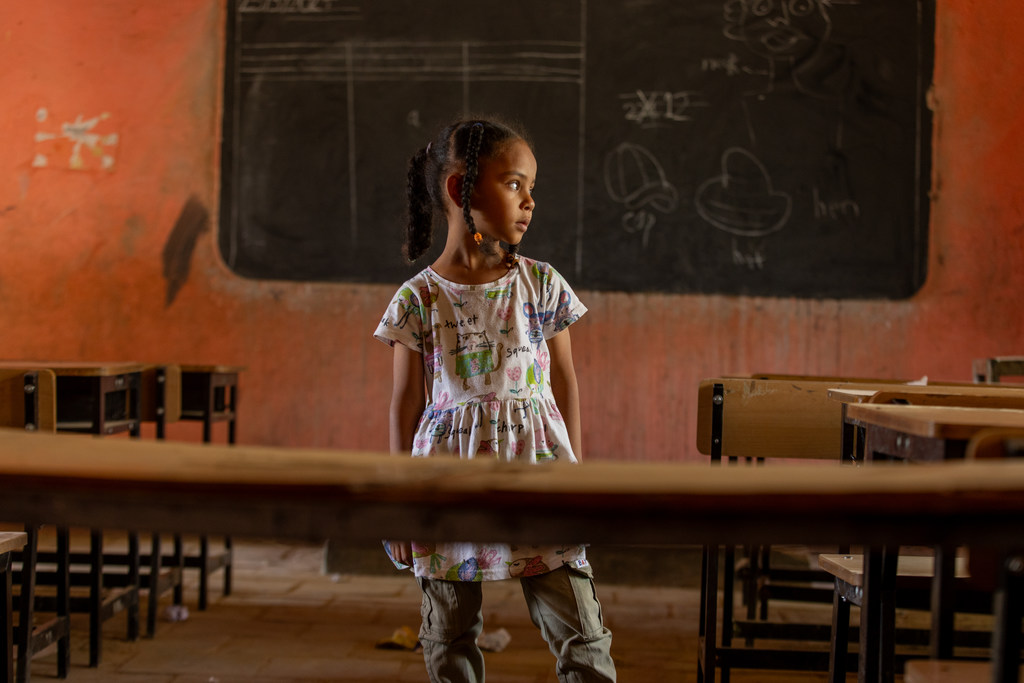The study, published on Friday, found that record numbers of children’s rights were being violated, including deaths and injuries, absence from school and life-saving vaccines, and severe malnutrition. That number is expected to increase.
From Palestine to Myanmar, Haiti and Sudan, the world is experiencing the most conflict since World War II. Currently, approximately 19% of the world’s children (more than 473 million) live in conflict zones, and 47.2 million are refugees due to conflict and violence.
Thousands of children have been killed and injured in Gaza, and in Ukraine, the United Nations has confirmed more child casualties in the first nine months of 2024 than in all of 2023.
Reports of rape and sexual violence against women and girls in conflict situations are widespread.
In Haiti, reports of child sexual abuse have increased by 1,000% so far this year.. In situations of armed conflict, children with disabilities tend to be disproportionately exposed to violence and rights violations.

UNICEF/L Party
Six-year-old Fatima from Khartoum stands in an empty classroom in a UNICEF-supported safe learning space in Kassala state, Sudan.
Education severely disrupted
It is estimated that more than 52 million children in conflict-affected countries are out of school.
Many children in Gaza and Sudan are missing out on more than a year of education. In countries such as Ukraine, Democratic Republic of Congo and Syria, schools have been damaged, destroyed or repurposed, leaving millions of children without access to learning.
Destruction of education infrastructure and instability around schools have worsened the already dire situation for children’s education in the region.
Malnutrition and Famine
Malnutrition among children in conflict areas has also risen to a serious level. Because conflict and armed violence continue to cause hunger, disrupt food systems, displace populations and impede humanitarian access in many conflict zones.
For example, in Sudan, famine has been declared in North Darfur, the first famine decision since 2017. It is estimated that by 2024, more than 500,000 people in five conflict-affected countries will be living in the most extreme food insecurity situations.

UNICEF/El Baba
Children in shelters for displaced people in Gaza (January 2024)
medical threat
Conflict is also having a devastating impact on children’s access to vital health services.
About 40% of unvaccinated and undervaccinated children live in countries partially or fully affected by conflict.
These children are often the most vulnerable to outbreaks of diseases such as measles and polio due to confusion and lack of access to security, nutrition and health services.
The impact on children’s mental health is also enormous. Exposure to violence, destruction, or the loss of a loved one can cause reactions including depression, nightmares, sleep problems, aggressive or withdrawn behavior, sadness, and fear.
This should not be the new standard.
“By almost all accounts, 2024 was one of the worst years on record for children in conflict in UNICEF’s history. – in terms of the number of children affected and the level of impact on their lives.” said Catherine Russell, UNICEF Executive Director.
“Children growing up in conflict zones are much more likely to miss school, become malnourished or be kicked out of their homes than children living in peace. Too often and repetitively. This should not be the new standard.. “We cannot allow a generation of children to become collateral damage from the world’s unchecked wars.”
